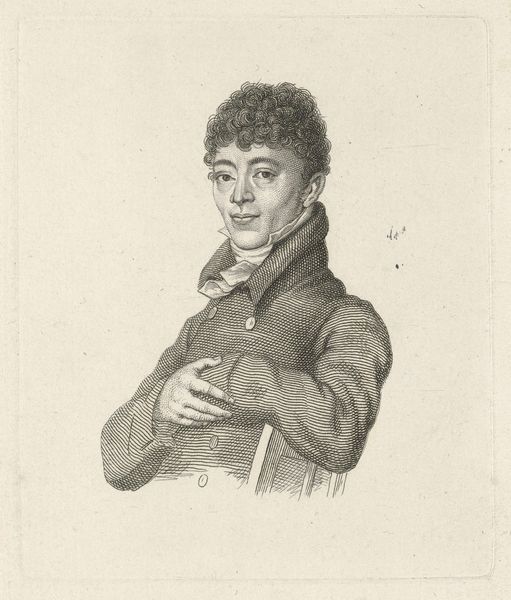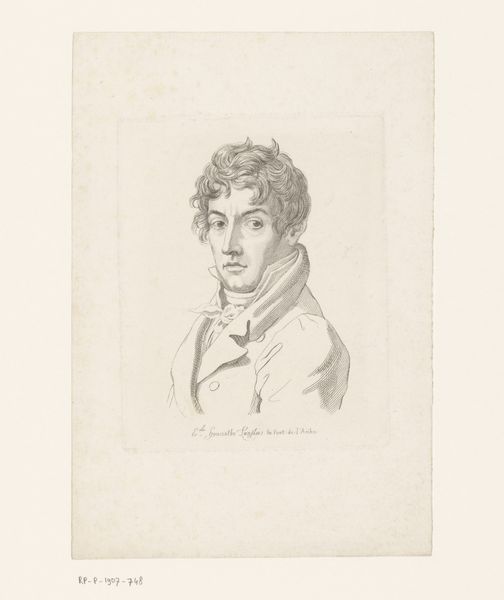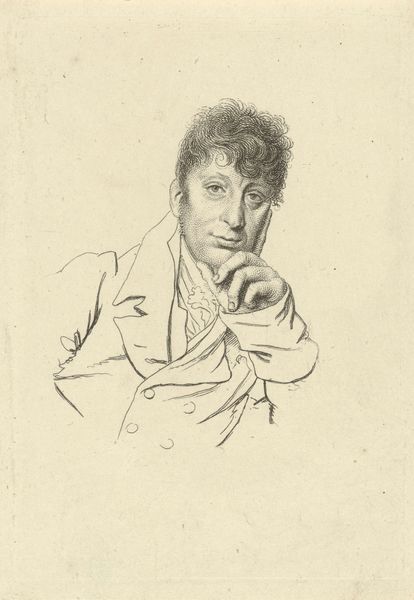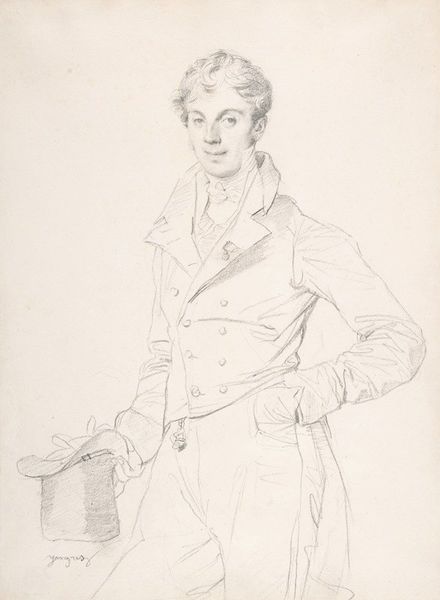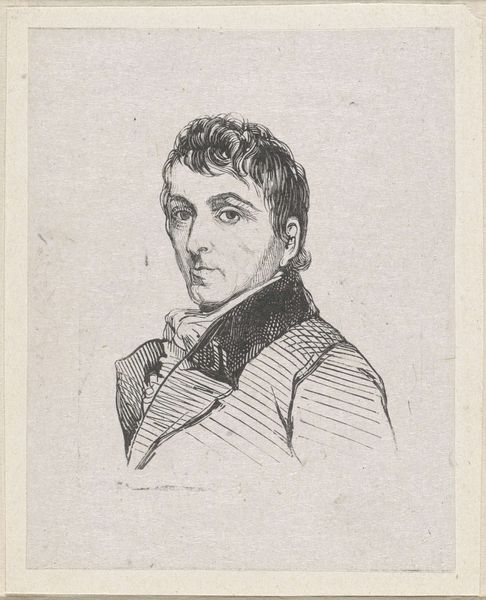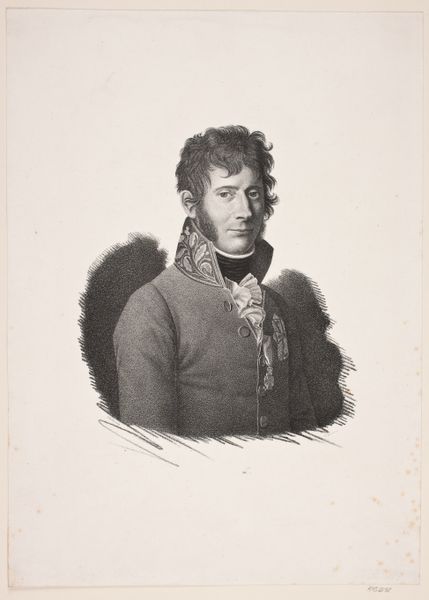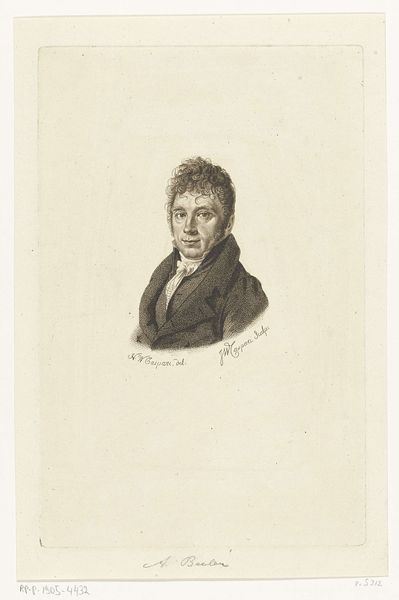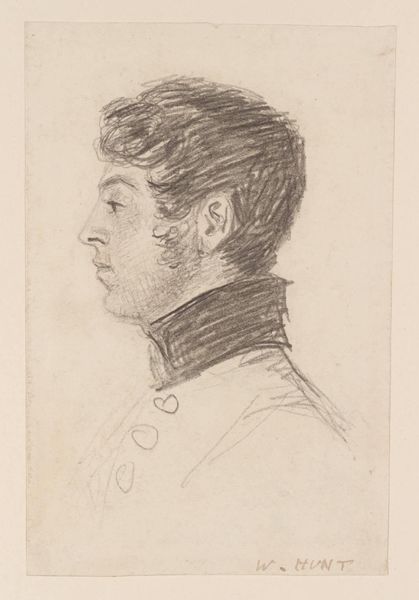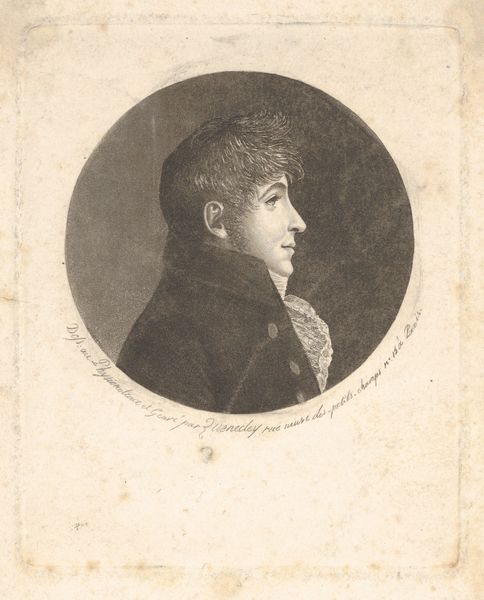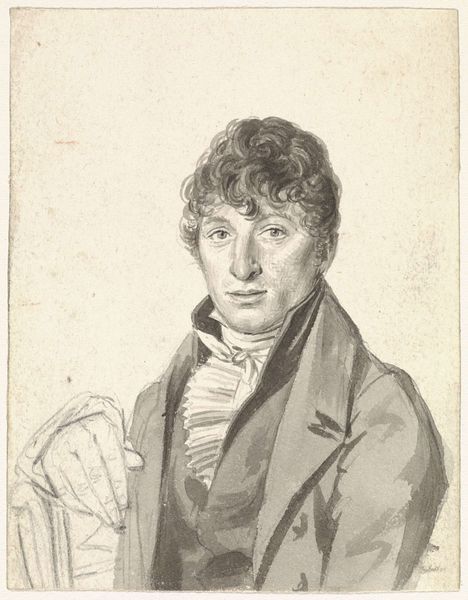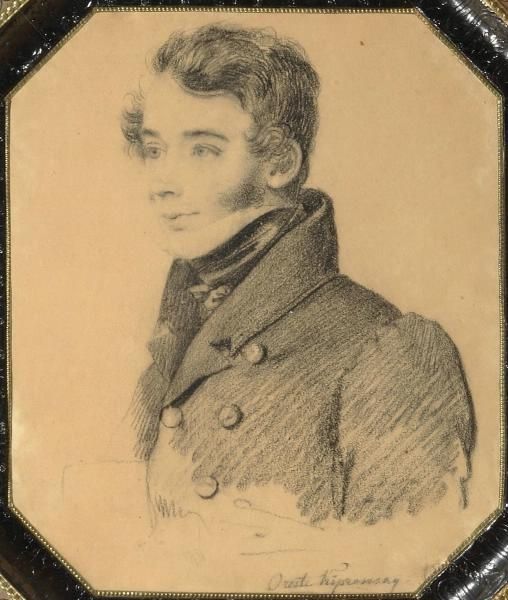
drawing, dry-media, graphite
#
portrait
#
drawing
#
dry-media
#
romanticism
#
graphite
#
history-painting
#
academic-art
Copyright: Public Domain: Artvee
Editor: Here we have "Le Baron Schwiter," a graphite drawing by Eugène Delacroix from 1826. I'm struck by how the hatching around the figure creates this almost somber mood, focusing attention sharply on the Baron's face. What do you see in this piece? Curator: Initially, I observe a compelling study in contrasts. Delacroix masterfully employs varied densities of graphite to define form and create depth. Note the textural richness achieved through hatching and cross-hatching, particularly around the figure. Editor: It almost looks like he's emerging from the darkness. How does that contribute? Curator: Indeed, this sense of emergence underscores the sitter's presence while simultaneously hinting at a psychological depth. Observe, too, the treatment of light; how it subtly models the Baron's features, drawing our eye to his expression. Notice the direction of the stroke of the lines composing the dark background as a vortex centered around the portrait. How does the shape direct our gaze to specific aspects? Editor: I see that now! The way he used the strokes to outline Baron's features emphasizes his eyes and the expression, bringing it into sharper focus than anything else. I'm just starting to see how important that specific effect of his lines becomes, now! Curator: Precisely. Delacroix’s deliberate manipulation of light and shadow, coupled with the economy of line, suggests a preoccupation with interiority and the communication of inner life. This goes beyond mere surface representation, what did you learn? Editor: That the very direction and form of a line can have a much bigger effect, even determining the tone, drawing, emotion! Thanks for this analysis.
Comments
No comments
Be the first to comment and join the conversation on the ultimate creative platform.
